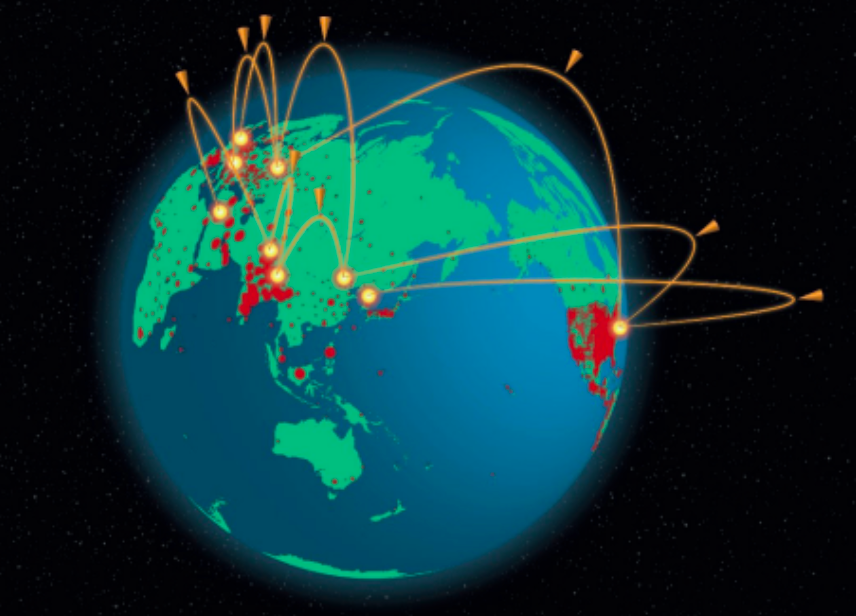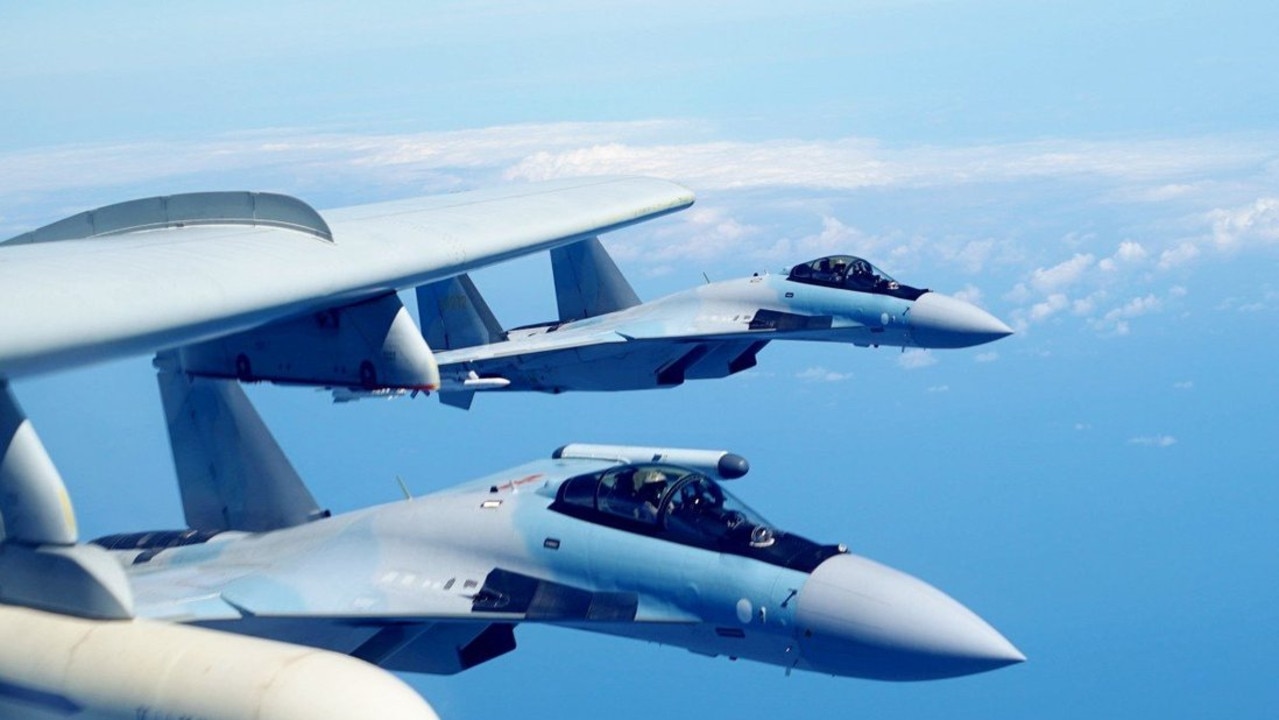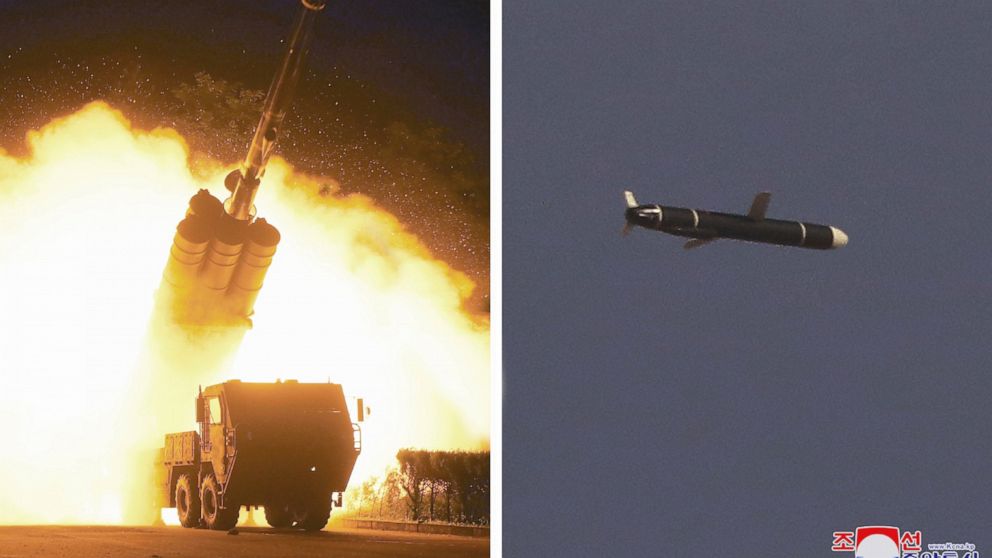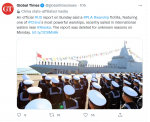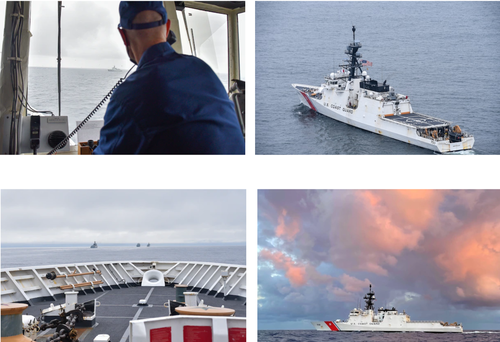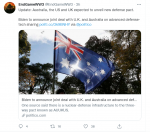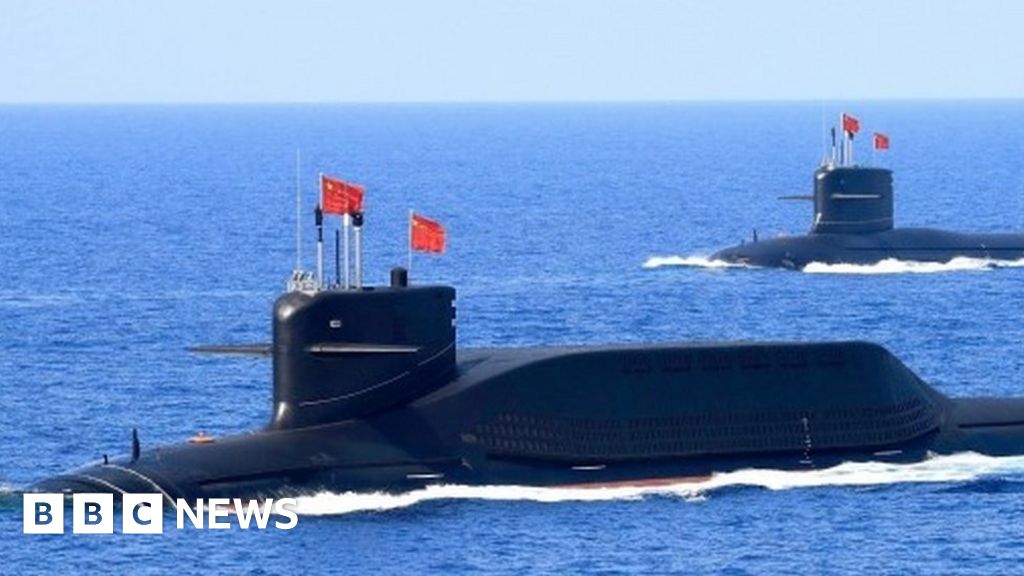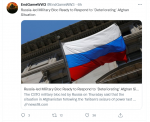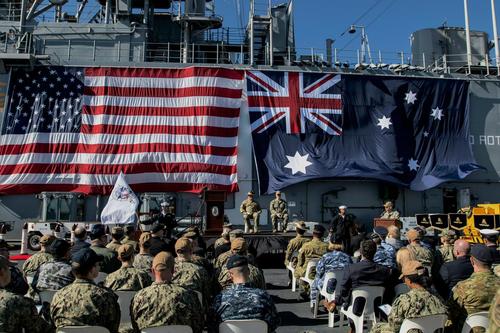‘Violate’: China’s unrelenting attacks
Jamie Seidel
8-9 minutes
China’s attacks on these countries are drawing in the entire world – and Beijing’s outrage and other countries’ meddling is growing.
On Sunday, Taiwan accused China of sending 19 strike fighters, four strategic bombers and one surveillance aircraft into its air defence zone. Since 2013, it’s launched more than 4400 flights to test the defences of its least compliant neighbours. Why?
International affairs analysts say they’ve uncovered a pattern.
It’s not just about training.
It’s not just about surveillance.
It’s not just about attrition.
It’s all of those things.
But it’s also about broadcasting Beijing’s mood. Mostly, it’s about driving a wedge between its opponents.
Japan, South Korea and Taiwan are all in the flight line.
“Often, Chinese forces violate multiple countries’ ADIZs [Air Defence Identification Zones] on their flights,” a recent report states. “While each country has so far managed the issue in its own way … the issue has become a regional one impacting all three countries.”
Message in a bomber
Last week, the tiny European nation of Lithuania went so far as to formalise its ties with
Taiwan by announcing a new diplomatic office there.
Beijing was upset.
It recalled its ambassador to Lithuania. It told Lithuania to take back its own.
The European Union responded by backing Lithuania’s right to pick and choose its friends and vocalised its sympathies for Taiwan’s plight.
Beijing was outraged.
“Some Europeans cannot tell the right from the wrong. This is because they have put self-interest at their centre,” accused the Communist Party-controlled
Global Times.
Then, like clockwork, Beijing on Sunday sent an
aggressive strike force into Taiwan’s monitored airspace. Four H-6 strategic bombers were escorted by 10 J-16 and four Su-30 fighters, along with other support aircraft.
It was a clear escalation of its regular pestering of Taiwan’s boundaries.
But nonpartisan think-tank the Federation of American Scientists (FAS) believes it’s become a well-established pattern. And that makes it dangerous.
Other intentions can be concealed within the habit.
Lines in the sky
An ADIZ is really just international airspace. But it’s a leftover relic of the Cold War when military aircraft were identified and monitored while approaching foreign shores.
It’s intended to be a buffer zone.
Under the United Nations Convention on the Law of the Sea (UNCLOS), a nation’s sovereignty extends 12 nautical miles (22km) from its coastline. This applies to both sea and air.
An ADIZ is supposed to keep any potential threat at arm’s length.
They’re imperfect tools to start with. Overlapping territorial claims can cause confusion and conflict.
But Beijing has perfected the art of leveraging this confusion.
It arbitrarily declared an ADIZ over the East China Sea in November 2013. Since then, it’s engaged in more than 4400 flights past Japan, South Korea and Taiwan.
It’s not just China asserting its claim to the East and South China Seas.
It’s not just China asserting ownership of the Japanese administered Senkaku Islands.
It’s about wedging longstanding tensions between Japan, South Korea and Taiwan.
Divided, Beijing knows, they will fall.
Fuzzy boundaries
UNCLOS was established after decades of international debate. It intended to eliminate the kind of dispute that helped inflame World War II.
But the set of rules is open to some interpretation.
And it’s of no help when two nations claim the same island anyway.
Beijing was heavily involved in the drafting of UNCLOS. It signed the treaty. It’s since chosen to ignore its rules and processes.
Washington did not sign the treaty. But it has chosen to apply the rules, and encourage their enforcement, wherever it suits it to do so.
Japan and South Korea both claim ownership of islands in the narrow waterway between them. Each applies their own ADIZ over this area.
Japan and Taiwan also both claim ownership of islands between the two territories. Their individual ADIZ boundaries also overlap.
A longstanding but delicate status quo was up-ended in 2013 when China announced it would enforce an ADIZ that spanned all three nations’ claims.
But, according to the FAS report, it’s being clever in doing so.
It sends combat aircraft into South Korean airspace before crossing into Japanes-controlled territory. It does the same through Taiwan.
It adds an element of tension: Why didn’t you stop them before they got to us?
It also focuses attention on territories where neighbours won’t agree over who holds responsibility and ownership.
Four-way standoff
“The most provocative flight to date remains the first and thus far only joint Sino-Russian incursion occurring on July 23, 2019,” the FAS report reads.
Chinese bombers passed through the narrow strait between Japan and South Korea. Russian bombers and surveillance aircraft joined them.
A Russian radar aircraft breached the territorial airspace around Dokdo island. The ROK scrambled 18 interceptors in response. After failed attempts to divert its course, some 80 cannon shells were fired into the air in front of the Russian aircraft’s nose.
Just 30 minutes later, the plane returned. This time the South Korean fighters had to fire 280 shots to get it to turn away.
The upshot?
Seoul and Tokyo went for each other’s throats.
“Instead of collectively pursuing the incident with China and Russia, South Korea and Japan publicly expressed their ire at the other for scrambling jets in response, claiming the other had no jurisdiction to do so, even though both have scrambled jets to similar incursions that span both ADIZs dozens of times before,” FAS notes. “The dispute over which country had the right to respond became another point of contention in gradually worsening relations.”
It was a textbook case of “Grey Zone” wedge politics.
It’s one they’ve attempted to emulate ever since.
“China’s ADIZ intrusion strategy is to exploit friction between Japan and South Korea to decouple the support structure of its biggest adversaries – Japan itself, as well as the United States,” argues FAS.
Devil’s advocate
Taipei is convinced Beijing has given up on the notion of peaceful reintegration. Taiwan has seen its violent crackdown on
Hong Kong’s protesters. It no longer places any credibility in the promise of “One China, Two Systems”.
Meanwhile, Beijing has been ratcheting up international tensions around its island neighbour.
Its probe of Taiwan’s airspace last weekend was linked to the spat over European relations. But it may also have tried to use it to drive a wedge between Washington and Taipei.
There was a single, but significant, incident in the South China Sea as the air drama unfolded.
On the morning of Monday, September 6, Taiwanese air traffic controllers detected two Chinese Su-30 and two J-16 fighter aircraft approaching their airspace.
They were expecting a routine incursion. So they began to monitor the activity of the aircraft.
Then a voice suddenly identified itself as representing China’s People’s Liberation Army. “This is the Chinese air force. You are approaching China’s territorial airspace. Leave immediately, or you will be intercepted,” the voice said.
Only a US navy P-8A Poseidon maritime patrol aircraft was nearby. But it was not particularly close to China’s borders. Instead, it was in international airspace south of Taiwan.
China claims it controls Taiwan’s airspace. Taipei disagrees.
Should Taiwan intervene? Should the US expect it to?
That was the point of the exercise. Find stress points. Apply pressure.
FAS warns the worst is yet to come.
“The United States, in particular, should decide now if it wants to take a more vocal stand against Chinese air provocations in the … ADIZs considering China will eventually strengthen its capabilities to violate the ADIZs around Guam and Hawaii regularly.”
Jamie Seidel is a freelance writer | @JamieSeidel
Read related topics:
China
Posted for fair use
On Sunday, Taiwan accused China of sending 19 strike fighters, four strategic bombers and one surveillance aircraft into its air defence zone. Since 2013, it’s launched more than 4400 flights to test the defences of its least compliant neighbours. Why?

www.news.com.au

